Black Rice: The Forbidden Grain Reclaimed
Rice has long been a staple of the Asian diet, sparking debates among health enthusiasts about its place in our diets. While some advocate for cutting it out entirely, others suggest healthier alternatives like brown rice, red rice, or quinoa. Among these, black rice—often referred to as “forbidden rice”—has emerged as a standout choice recommended by nutritionists.
The name “forbidden rice” has its roots in ancient China. Black rice was once a highly coveted food reserved for the Chinese elite due to its purported health benefits. The grain was believed to improve kidney, stomach, and liver health, and was consumed only by royalty and the wealthy. Its rarity and exceptional qualities led to it being restricted from the general populace, earning it the title “forbidden rice.”
Historically, black rice was primarily cultivated in the Yangtze River Valley. It wasn’t just a dietary staple but was also used for its medicinal properties. Chinese emperors valued black rice for its nutritional benefits and its perceived ability to enhance health and longevity.
As time passed, black rice spread to other parts of Asia, including Thailand, Indonesia, and India, becoming an important part of various cultural cuisines and traditions.
In recent years, black rice has gained global recognition for its unique flavor, striking appearance, and impressive nutritional profile. Rich in antioxidants, vitamins, and minerals, black rice is now widely available and appreciated beyond its former exclusive circles. No longer reserved for the elite, it has become an accessible and nutritious option for all.
Highlights:
Karigai Karuppu Kavuni Porridge mix is incredibly nutritious and is carefully prepared to maximize its health benefits. As the black rice is presoaked for 10 hours, it is easier to digest with enhanced nutrient absorption. Black rice is rich in antioxidant – anthocyanin that protects your cells and reduce inflammation. Hand pounded black rice is high in fiber, rich in essential vitamins and minerals, controls diabetes, supports gut health and gluten-free. Overall, this mix is versatile and can be made into a healthy breakfast, lunch, or dinner.
Ingredients:
Karigai Karuppu Kavuni, Cumin, Pepper, Dry ginger.
How to use:
RECIPE 1: Take 1/2 cup of Karigai Karuppu Kavuni porridge mix. Add 2 cups(4 times the quantity) of water. Cook in a pressure cooker for 4 whistles or in a saucepan until fully cooked.
Sweet Option: Add a natural sweetener of your choice. Milk/coconut milk and cardamom can be optionally added. Serve warm.
Savory Option: Add buttermilk and salt and serve.
Enjoy the porridge in the way that suits your taste.
RECIPE 2: To make upma or kichidi, saute the Karuppu Kavuni porridge mix with your favorite spices and vegetables, then cook with water until soft and fluffy.


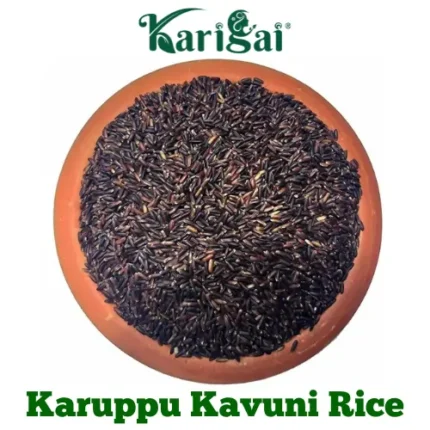
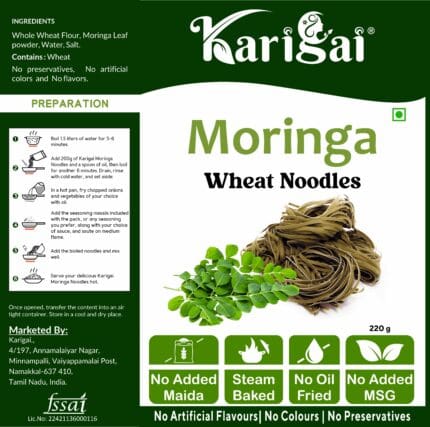
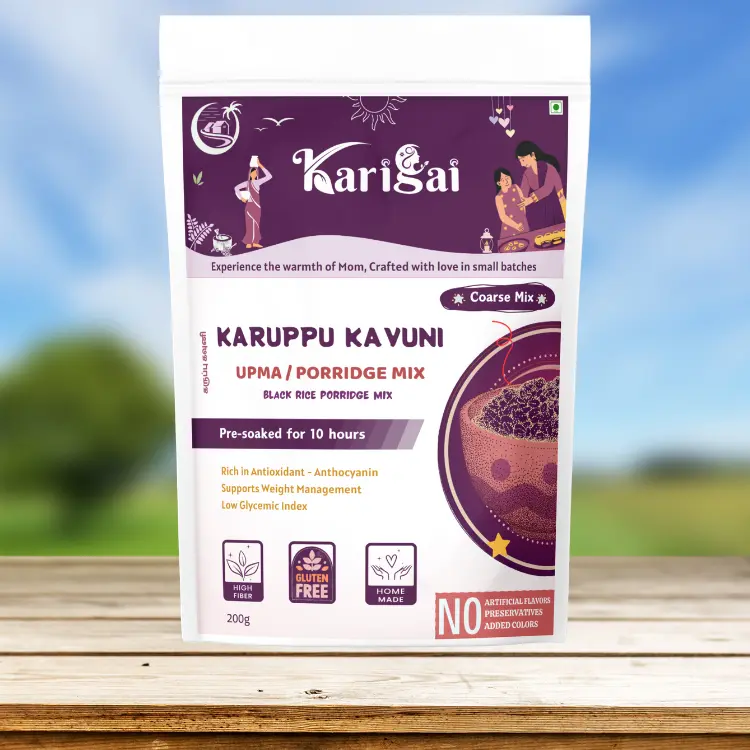
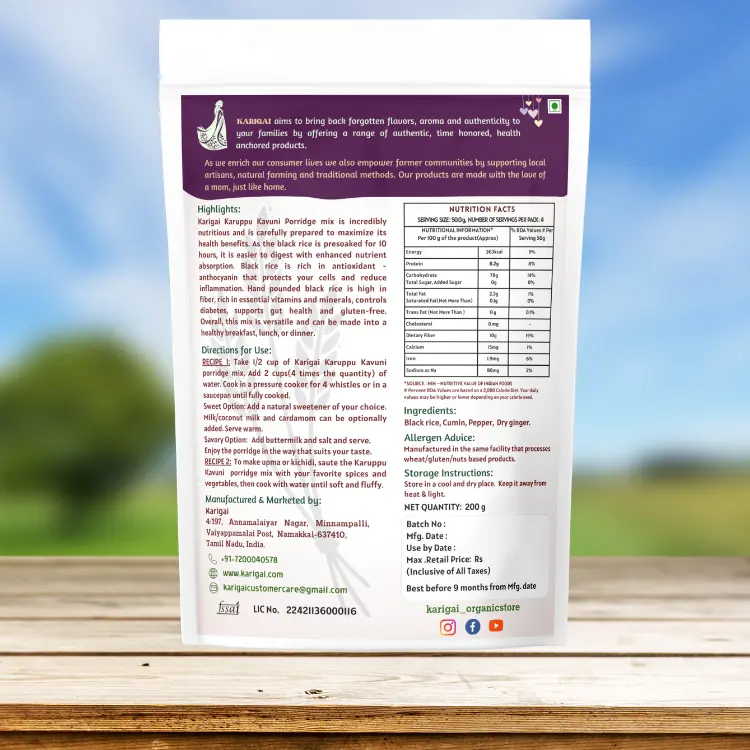
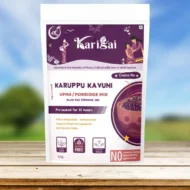
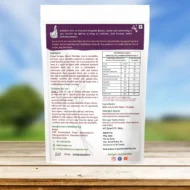
Raji –
Good quality and good taste, i never had this type of porridge mix. Every one in my family like this product.
Store manager Vidya Vetrivel –
Thank you for your valuable feedback!